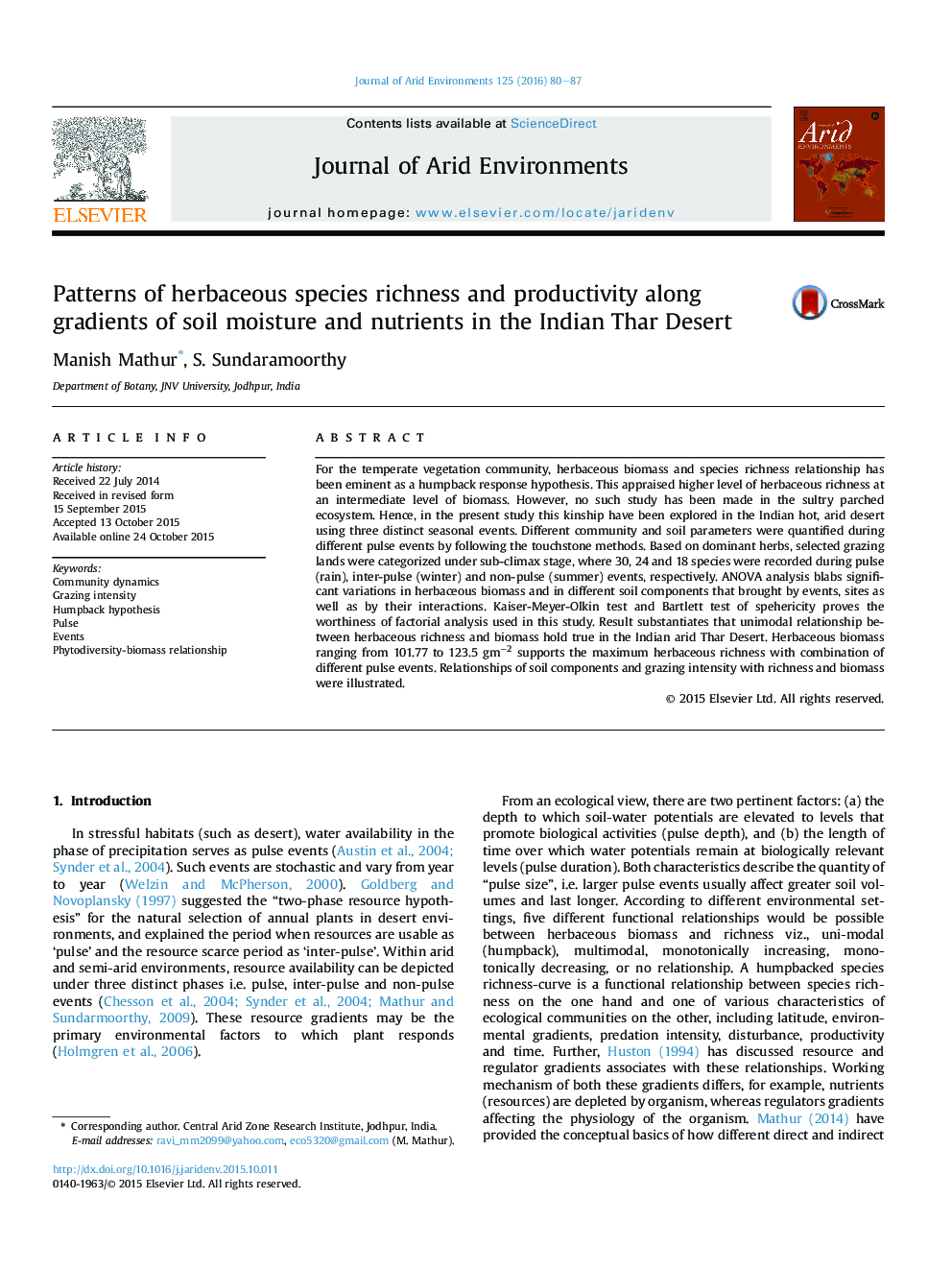| کد مقاله | کد نشریه | سال انتشار | مقاله انگلیسی | نسخه تمام متن |
|---|---|---|---|---|
| 4392796 | 1618234 | 2016 | 8 صفحه PDF | دانلود رایگان |
• Hump-back relationships exists between herbaceous richness and biomass.
• In Indian hot, arid region 101.77–123.5 gm−2 biomass support maximum herbaceous richness.
• Soil components showed various relationships with richness and biomass.
• Grazing intensity influence both richness and biomass in a synergistic manner.
For the temperate vegetation community, herbaceous biomass and species richness relationship has been eminent as a humpback response hypothesis. This appraised higher level of herbaceous richness at an intermediate level of biomass. However, no such study has been made in the sultry parched ecosystem. Hence, in the present study this kinship have been explored in the Indian hot, arid desert using three distinct seasonal events. Different community and soil parameters were quantified during different pulse events by following the touchstone methods. Based on dominant herbs, selected grazing lands were categorized under sub-climax stage, where 30, 24 and 18 species were recorded during pulse (rain), inter-pulse (winter) and non-pulse (summer) events, respectively. ANOVA analysis blabs significant variations in herbaceous biomass and in different soil components that brought by events, sites as well as by their interactions. Kaiser-Meyer-Olkin test and Bartlett test of spehericity proves the worthiness of factorial analysis used in this study. Result substantiates that unimodal relationship between herbaceous richness and biomass hold true in the Indian arid Thar Desert. Herbaceous biomass ranging from 101.77 to 123.5 gm−2 supports the maximum herbaceous richness with combination of different pulse events. Relationships of soil components and grazing intensity with richness and biomass were illustrated.
Journal: Journal of Arid Environments - Volume 125, February 2016, Pages 80–87
